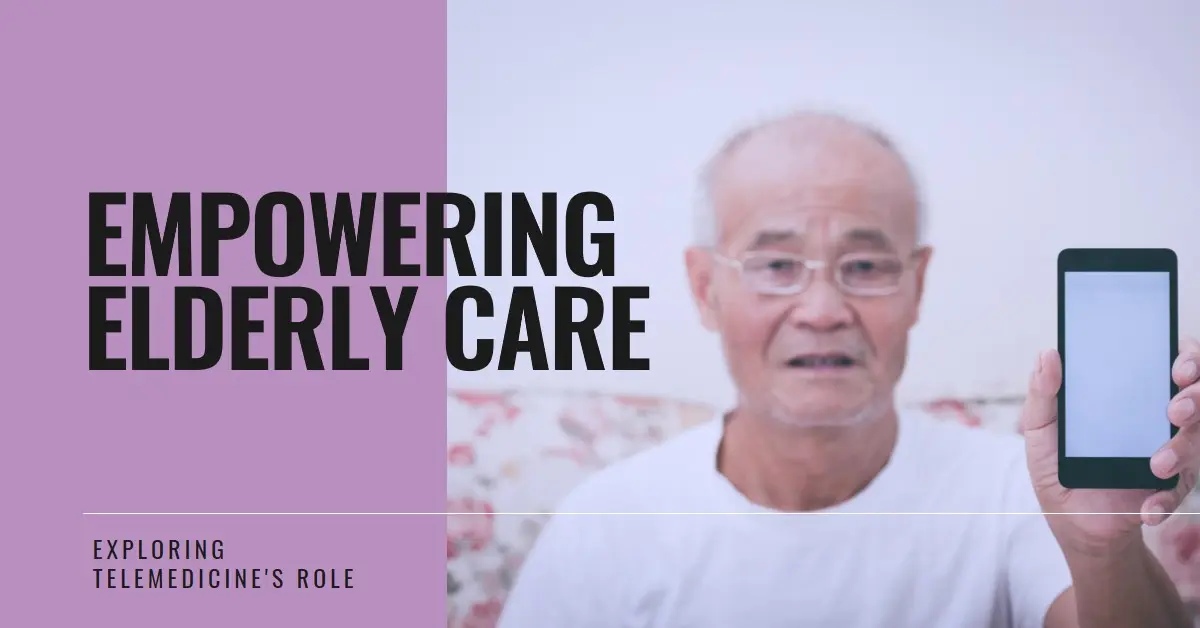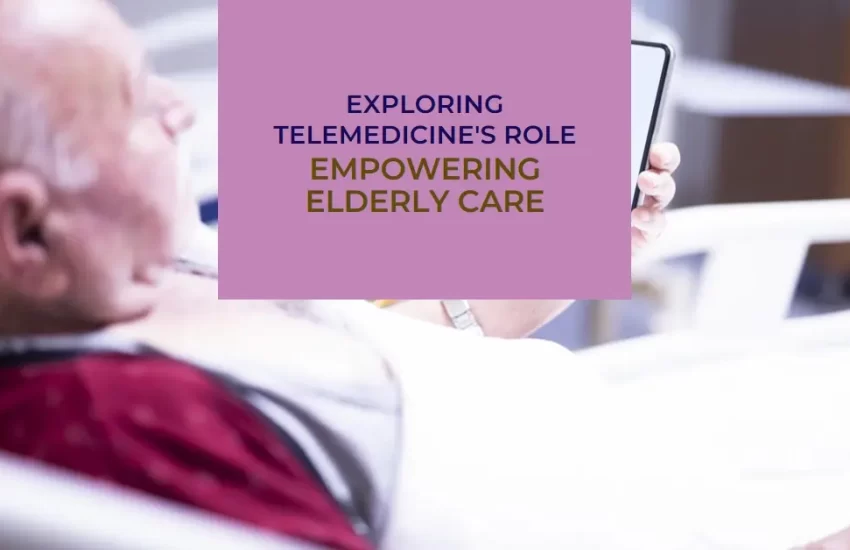Elderly care is becoming important day by day as the population is increasing. Elderly people have complicated demands that are frequently difficult for traditional healthcare models to meet, especially for those who have chronic illnesses or mobility challenges. Telemedicine makes elderly care effective and accessible. Here are the details of how telemedicine is transforming elderly care.
The Growing Need for Elderly Care
Elderly care is essential for individuals aged 65 and older, who face health challenges. These challenges include Chronic Conditions such as Diabetes, hypertension, and other long-term illnesses, Cognitive Issues like Dementia and other memory-related disorders.
People encounter mobility Constraints and find it difficult to travel for regular checkups to ensure proper health that’s why physical health examinations become hectic for those people in this situation telemedicine platforms prove an effective solution
How Telemedicine Benefits Elderly Care

Telemedicine, which provides healthcare services remotely via technology, is revolutionizing elderly care. Here are the key benefits:
-
Enhanced Accessibility
- Convenience: Elderly individuals can connect with healthcare providers from home.
- Reduced Transportation Needs: Virtual consultations eliminate the need for travel and reduce transportation expenses.
- Easy Access to Regular Check-ups: Making appointments and consultations more manageable and regular.
-
Continuous Monitoring
- Condition Management: It helps in ongoing monitoring by using the latest remote technology.
- Real-Time Data: Enables teledoctors to track health metrics and diagnose accordingly.
- Patients receive 24/7 care from home, reducing the need for frequent in-person visits.
- Telemedicine minimizes hospital readmissions and emergency visits, cutting overall healthcare costs.
- Continuous monitoring enables real-time tracking of vital signs, reducing health risks through early detection.
- AI is helping to make online healthcare more enhanced.
-
Better Coordination of Care
- Integrated Approach: Enables transparent communication between physicians and patients.
- Improved Outcomes: Guarantees the cohesiveness of all elements of an elderly patient’s health management.
-
Access to Specialized Care
- Rural and Underserved Areas: Elderly individuals can consult with specialists irrespective of the habitat where they live. It provides equal care and consultation to patients belonging to either rural or urban areas
Challenges of Telemedicine in Elderly Care
While telemedicine offers numerous benefits, it also presents challenges, especially in elderly care.
-
Technological Barriers
Many elderly individuals may struggle with smartphones, tablets, or computers. Sometimes there may be a disruption of the internet or unavailability of services and technology which leads to frustration for users.
-
Connectivity Issues in telmedicine
Poor connectivity to the internet can lead to poor quality of consultation and confusion between physician and patient. Some users may find it difficult to convey their health issues due to poor internet connectivity.
-
Privacy and Security Concerns
Telemedicine platforms may ask to share some personal information. Platforms must adhere to strict regulations like HIPAA to protect patient privacy.
-
Limited Physical Examination
Some conditions may require a proper physical examination in these cases telemedicine platforms may not prove beneficial. Sometimes inaccurate physical examination leads to incomplete diagnosis.
Telemedicine limits a physician’s ability to conduct a comprehensive physical examination, which may hinder the accurate diagnosis of certain conditions that rely on touch, palpation, or real-time physical assessments, such as heart murmurs or abdominal pain.
Without the ability to perform hands-on exams, telemedicine heavily relies on patients’ descriptions of their symptoms, which can sometimes lead to incomplete or imprecise information, affecting the quality of care.
Telemedicine platforms increasingly incorporate digital tools like remote monitoring devices and patient-submitted images or videos, which help mitigate the limitations of physical examinations but cannot fully replicate the tactile element of in-person care.
The Future of Telemedicine in Elderly Care
With the continuous evolution of technology, advancements are making devices increasingly intuitive, accompanied by significant improvements in internet infrastructure. This progress is being paralleled by a growing emphasis on education, as both elderly individuals and their caregivers are gradually being equipped with the necessary skills to navigate the digital landscape, thereby reducing technological obstacles.
In this shifting environment, Platforms like Doctor tele Med is emerging at the forefront, providing customized services that is specifically designed to cater to the unique requirements of older adults, thereby enhancing the overall accessibility of telehealth solutions.
Conclusion
Telemedicine is transforming elderly care by improving accessibility, enhancing care coordination, and supporting caregivers. While challenges exist, the benefits of telemedicine in managing chronic conditions and overall health make it an invaluable tool in modern healthcare. As technology evolves, telemedicine will play an even larger role in improving the quality of life for older adults. By leveraging platforms like Doctor Tele Med, elderly patients can receive high-quality care from the comfort of their homes, paving the way for a more inclusive and effective healthcare system.
